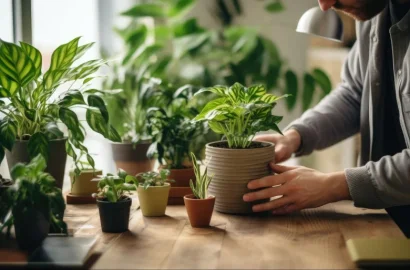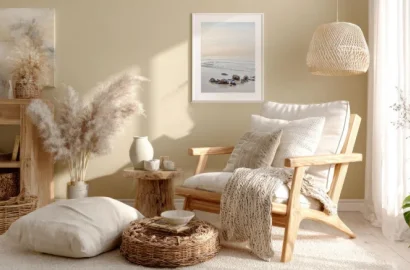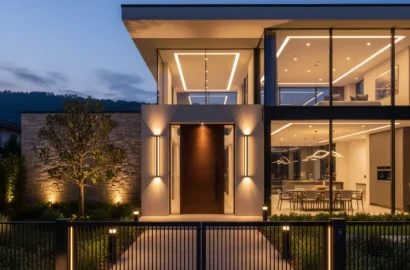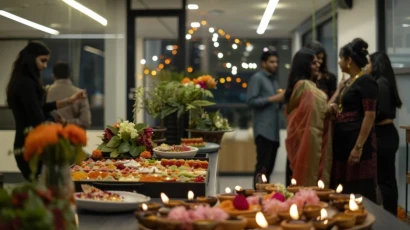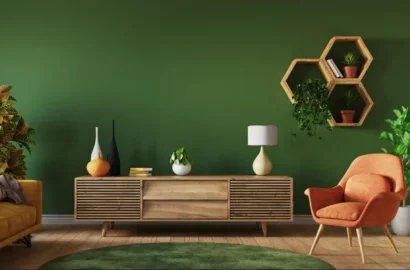Check out this complete guide on sustainable interior design. Find out about eco-friendly tips, latest trends, and useful ideas that will help you make beautiful yet eco-friendly interiors.
Sustainable interior design is a responsible and creative way to design interior spaces. It takes environmental consciousness and aesthetics as themes, allowing for homes, workplaces, and public spaces to consider the health of the occupants, reduce environmental impact, and signal a connection with nature. As we move into the future, sustainable design will become an essential part of the modern design ethos that addresses climate challenges and changing lifestyles.
In this guide, we will try to deeply understand the principles of sustainable design, find innovative ideas for creating and designing eco-friendly interiors, highlight emerging trends, and provide tips to help you design sustainably.
Here’s a list of topics that we have covered in this guide:
- What is Sustainable Interior Design?
- Principles of Sustainable Design
- Why Sustainable Interior Design Matters
- Characteristic Features of Sustainable Interiors
- Room-by-Room Guide to Sustainable Interiors
- Practical Tips to Start Your Sustainable Design Journey
- Final Thoughts
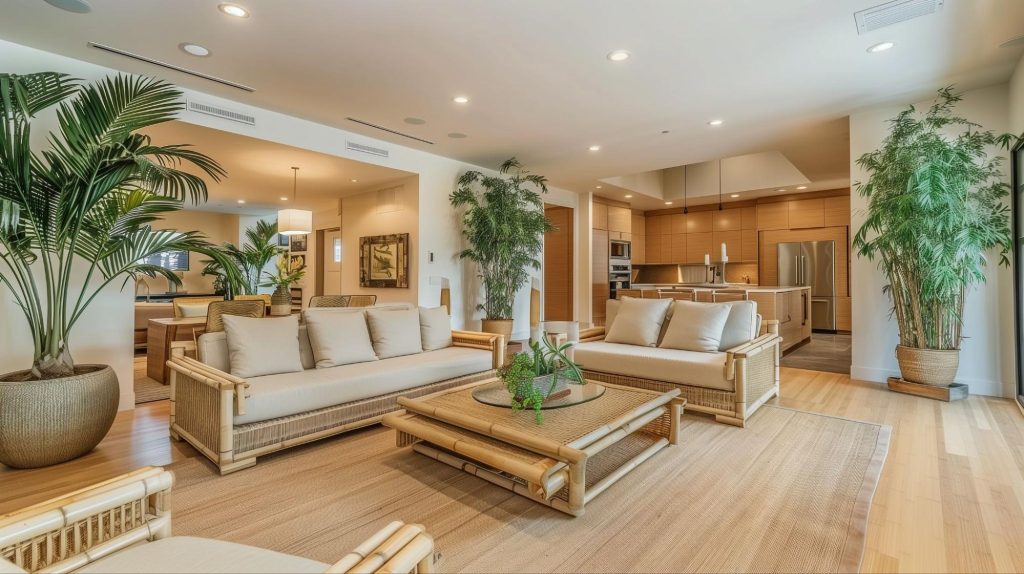
What is Sustainable Interior Design?
Sustainable interior design was pioneered by Sir Van der Ryn, also known as the father of ‘green architecture’. Unlike traditional design, which more often than not prioritizes aesthetics and cost, sustainable design takes into consideration the lifecycle of the materials used, energy consumption, and the long-term impact on the occupants and the environment.
For example, designing a workspace with natural light as the primary source of illumination may reduce the need for artificial lighting during the day and cut down on energy costs, further reducing carbon emissions. Similarly, choosing furniture that is made from recycled materials, such as office desks that are made from reclaimed wood, gives a second life to the materials increasing the longevity of the interior.
At its core, sustainable interior design is about making choices that consider the future of the planet. It advocates for a shift from a fast, disposable, and consumerist culture to one of longevity and thoughtful consumption which creates a space that is not just functional but also in harmony with nature.
Principles of Sustainable Design
With our basic understanding in place now, let’s move on to a detailed explanation of the fundamentals of sustainable design.
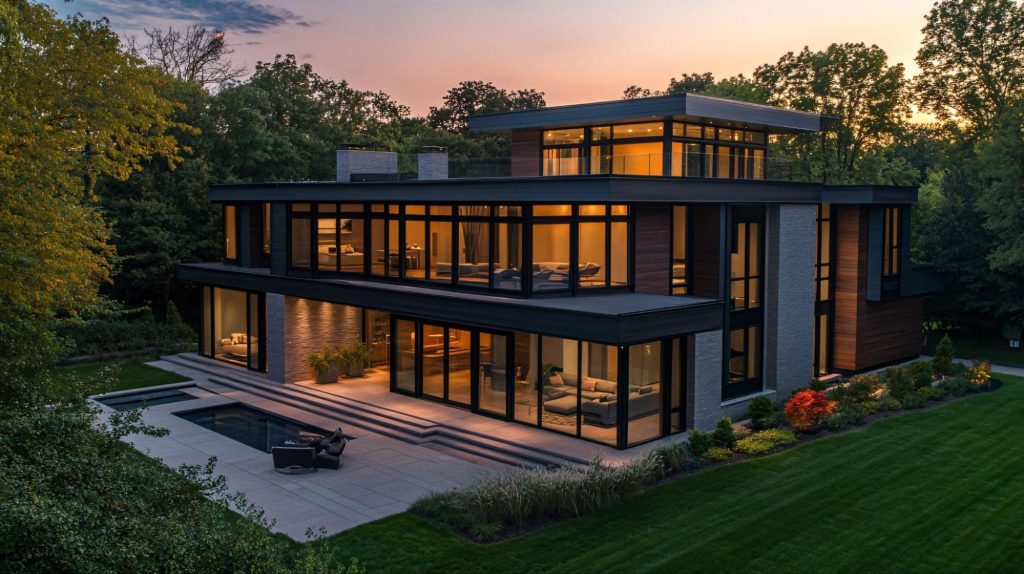
1. Holistic Design Approach
The holistic design principle is part of the systems theory, a concept created by Jay W. Forrester at MIT in the 50s, that views space as an ecosystem where each element of the system is interconnected within the context of the system as a whole. In design, this thinking often takes the form of multi-purposiveness. For example, a house, designed holistically, can use solar panels to generate power for let’s say LED lighting, while the heat that is generated from the solar power unit can be used to warm up other parts of the house. The goal is to create synergy between different elements of the space.
2. Durability and Adaptability
The philosophy of “design for longevity” is about the importance of creating spaces and elements that stand the test of time. This principle aligns with the Cradle-to-Cradle design theory which, in simple terms, focuses on products that can be reused, repaired, or recycled. It takes into account the ‘next use’ of the product and not just the current use. In the Indian cultural context, this design philosophy can be found in households when looking at the journey of denim jeans which starts as an apparel, later becoming a cleaning cloth. A good example is a modular living room setup with adjustable shelving and multipurpose furniture that can adapt to changing needs. This approach reduces cost and future-proofs interiors against obsolescence.
3. Energy Efficiency
One of the most important aspects of sustainable interior design is energy efficiency. It can be achieved through strategic planning and clever usage of technology. For instance, as mentioned earlier, solar systems can be used to regulate temperature naturally and reduce reliance on artificial heating systems. Biogas plants that process biodegradable waste can be installed to serve two purposes: generating electricity or producing biogas (methane) specifically for cooking. These plants are typically installed at a community or industrial level, although smaller-scale models for homes do exist. Architectural ventilation systems that take natural wind flow to cool the interiors. AI-powered thermostats that minimize energy consumption by adjusting the temperature based on usage patterns. All of these are integrations that capitalize on technology to ensure energy efficiency.
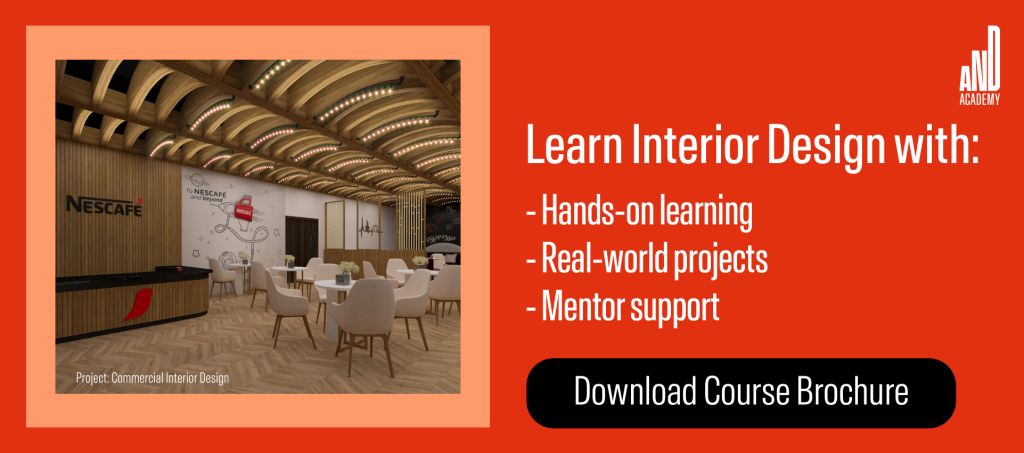
4. Use of Non-Toxic and Eco-Friendly Materials
The principle here is to create places that promote physical and mental well-being by making the function of design–psychological stimulation and relief; the feel-good, motivational factor. For instance, it is recommended to use Low-VOC (volatile organic compound—added to paints and cleaning products as quick-drying agents and/or fragrances) paints for walls and surfaces because they cause health problems. Usage of such paints and products, while reducing health risks, gives people a psychological sense of relief and safety. Similarly, the habitual usage of natural fibers like jute, wool, and organic cotton which are eco-friendly alternatives to synthetic textiles, or glancing at walls coated with clay-based paint and flooring that is natural cork, or sleeping in bedding that is made from organic linen signals again, a psychological connection with nature. These are choices that not only align with sustainability but also create a tranquil retreat.
5. Waste Reduction
Waste reduction is also integral to sustainable interior design. The most important box to check is the ‘minimize waste that goes to landfill’ box, followed by ‘repurpose materials’, ‘second-hand furniture’, and ‘deconstruction instead of demolition’ among others. Popular practice is the use of reclaimed wood (lumber obtained from deconstructed parts) or salvaged metal (obtained from unused parts). Recycling construction waste and using cradle-to-cradle-certified materials is also a common practice in some places. By integrating these practices, designers can create interiors that can balance functionality and environmental consciousness.
Let us now understand why sustainable interior design is important in the modern world.
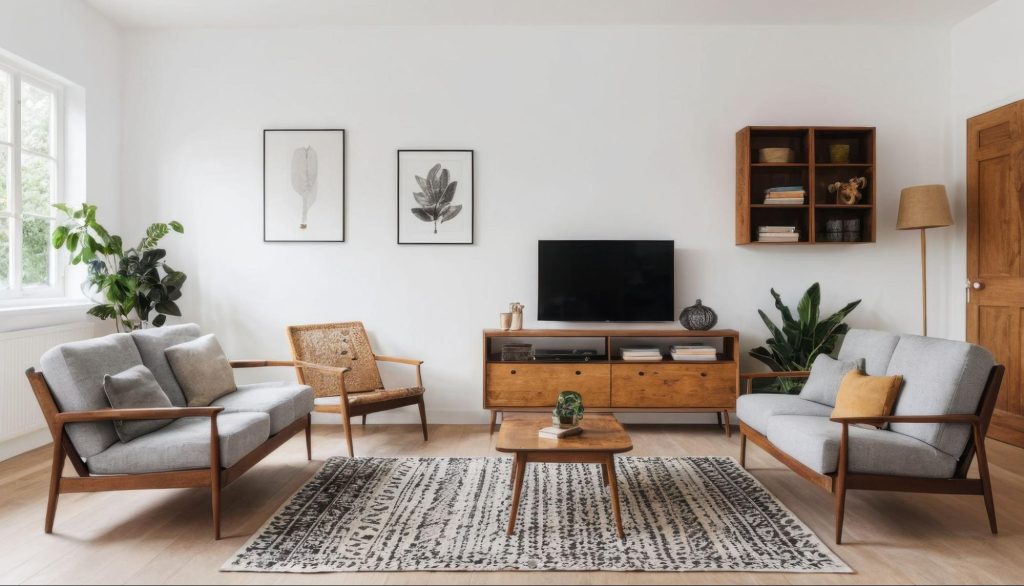
Why Sustainable Interior Design Matters
Sustainable interior design is not just about aesthetics and style. It is where the style meets purpose, crafting beautiful spaces that care for the planet, nurture health, and make smart use of resources. Let’s explore the key benefits of sustainable interior design.
1. Environmental Impact
Buildings account for nearly 40% of global carbon emissions (as per UNEP), including energy usage and construction processes. Sustainable interior design tries to mitigate this impact by reducing the consumption of resources and the generation of waste. For example, replacing single-use plastics from commercial spaces with biodegradable materials or installing green roofs that absorb CO2, in urban spaces.
2. Health Benefits
Since the indoor environment influences physical and mental health, sustainable interiors minimize exposure to harmful chemicals by prioritizing non-toxic finishes, furniture, and adhesives. Architectural ventilation, inclusion of indoor plants, and anti-VOC finishes can improve air quality reducing respiratory issues.
A corporate office designed with biophilic elements that feature natural light, open ventilation, and greenery—can lead to a 10% decrease in drowsiness and reduce eyestrain and headaches of office workers by 84% as supported in research by Cornell University Professor Alan Hedge.
3. Economic Advantages
Sustainable design may initially seem costly but its long-term benefits outweigh the initial investment. Energy-efficient appliances, LED lighting, and smart home systems reduce utility bills. Durable materials and designs lower the need for frequent repairs and replacements, saving money over time.
Research by the Cornell Professor mentioned above also says that optimum exposure to natural light reported a 2 percent increase in productivity – an additional $100,000/year of value for every 100 workers or around $2m over the window’s lifetime.
4. Aligning with Global Goals
Sustainable interior design directly supports the UN’s Sustainable Development Goals (SDGs), particularly those related to sustainable cities and communities, responsible consumption, and climate action.
The overarching theme of current times, as seen in the changed focus in areas of art, literature, films, comedy, politics, etc is moving towards ‘climate activism’. If more and more designers, across disciplines and mediums, adopted eco-friendly philosophies and it reflected in their work, then it would, over time, create a collective consciousness about interior design where it becomes synonymous with sustainability, and contribute to a larger global movement. For instance, the zeitgeist of the 80s was materialism and consumerism– ‘confident and bold’ fashion, narcissistic characters of Mad Max and Die Hard, and ‘colorful and busy’ billboard advertisements among other phenomena– created the ‘feel’ for what design should be. Even if not on a monumental scale, sustainability can still become a major part of the current zeitgeist and influence attitudes related to climate activism.
We have understood why sustainable design matters, let us now look at how to tell it apart.
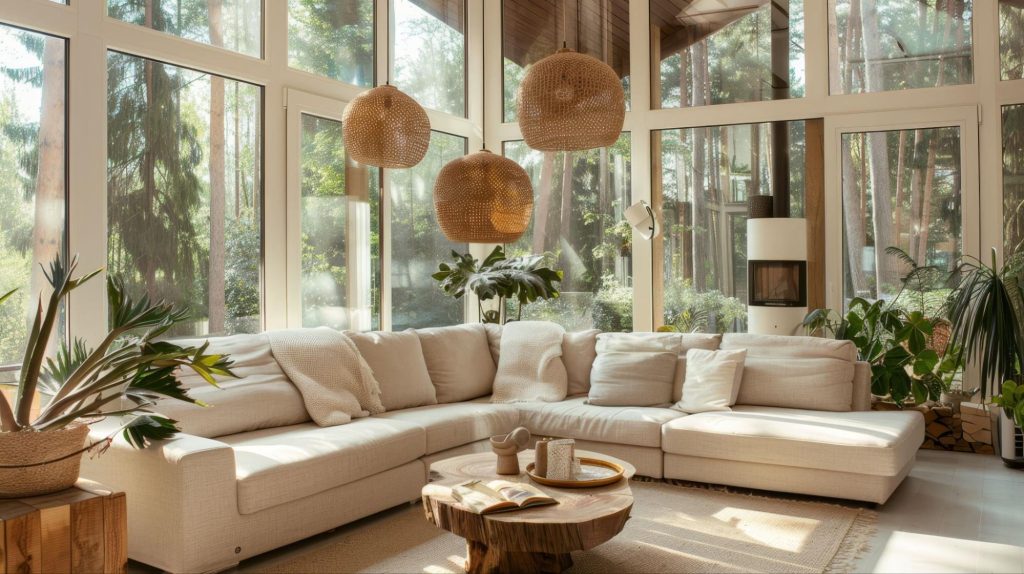
Characteristic Features of Sustainable Interiors
Sustainable interiors do more with less—minimum waste, minimum consumption, and less reliance on finite resources. They’re designed to prioritize materials that can be reused, recycled, or naturally decomposed. Let’s see some of the classifying features of sustainable design.
1. Energy-Efficient Design
You would not be wrong if you were to take for granted that a house designed sustainably is energy efficient. Design implementations that optimize natural light and ventilation can make interiors substantially energy-efficient. Large windows, skylights, and strategically placed mirrors amplify natural light and reduce the consumption of artificial lighting.
2. Water Conservation
Sustainable design, undoubtedly, also advocates for the conservation of water. Water-efficient fixtures, such as aerated faucets (that deliver a mixture of air and water) and dual-flush toilets, are some of the essentials in sustainable interiors. Greywater recycling systems, which repurpose water from sinks and showers for irrigation, and permeable surfaces for rainwater harvesting are some of the more innovative options.
3. Eco-Friendly Materials
Natural and renewable materials like bamboo, cork, and hemp offer versatile options for flooring, furniture, and decor. Bamboo, for instance, grows rapidly and can be harvested without harming its root system which makes it a highly sustainable choice A trendy application is bamboo paneling on walls, creating a warm and textured aesthetic.
4. Local Sourcing
When materials are sourced locally, they reduce transportation emissions while supporting regional economies. For example, an artisan-crafted dining table made from locally reclaimed wood minimizes the carbon footprint associated with production and shipping while also telling a story.
5. Indoor-Outdoor Connection
Sustainable design calls for a departure from the standard industrial design that makes people feel confined in cubicles and disconnected from the rest of the world and encourages design choices that blur lines between outdoors and indoors in some of its elements. For instance- indoor plants, natural stone, or wood pieces. A popular example is creating seamless transitions with patios or decks that mirror indoor living areas, extending the functionality of the space. Another popular example is the moss wall (A section of wall upon which preserved moss is placed in artistic patterns to signal a connection with nature).
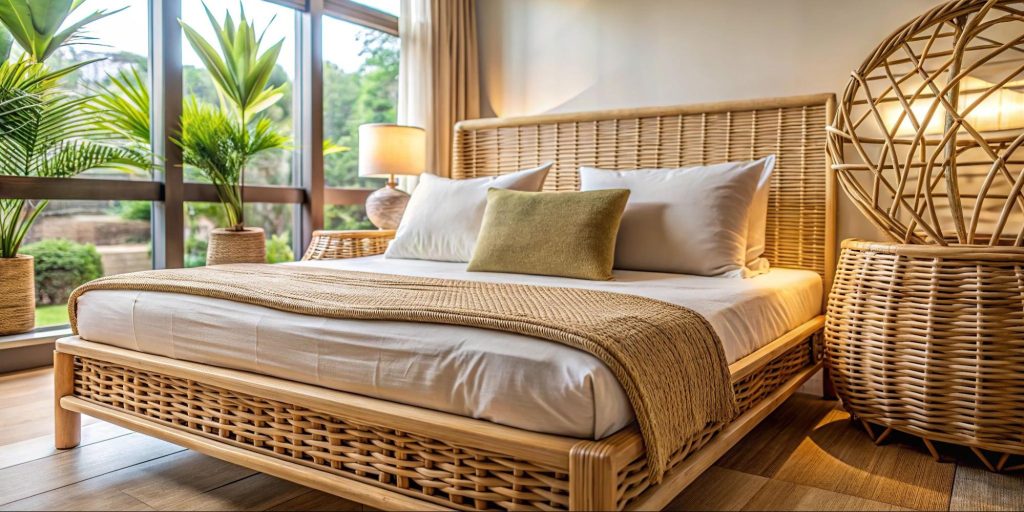
Room-by-Room Guide to Sustainable Interiors
Creating a sustainable home requires thoughtful choices in every room. Depending on the part of the house, there are numerous ways to integrate sustainability into daily life. Below, we explore options for each space.
1. Living Room
The living room is central to the home—where family and friends gather, relax, and entertain. Designing this space sustainably can make a significant impact without sacrificing much of the comfort or the style. Here are our top suggestions.
- Modular Sofas: Modular furniture is a popular choice. The pieces can be rearranged, reconfigured, or expanded depending on the needs of the space and the occasion. This flexibility ensures that the furniture can evolve with your lifestyle, increasing its usefulness over time and removing the need for multiple pieces. For example, a sectional sofa that can be rearranged into a sofa bed or split into individual seating pieces offers flexibility for small gatherings, movie nights, or larger family events.
- Upcycled Materials: Using upcycled materials not only reduces waste but also adds character and uniqueness to the home. Repurposing furniture or objects that might otherwise end up in landfills can create functional and stylish pieces. For example, an old ladder can be transformed into an aesthetic bookshelf or storage unit. This approach requires creativity, but it does lead to more personalized and sustainable interiors.
- Natural Fiber Rugs: Rugs made from natural fibers like jute, sisal, wool, or cotton add texture and warmth to a living room. Unlike synthetic fibers, which are petroleum-based and take decades to break down, natural fibers are biodegradable, renewable, and require less water and chemicals to produce. Wool, in particular, is durable and can last for years, while jute and sisal are better for frequent-use areas because of their strength.
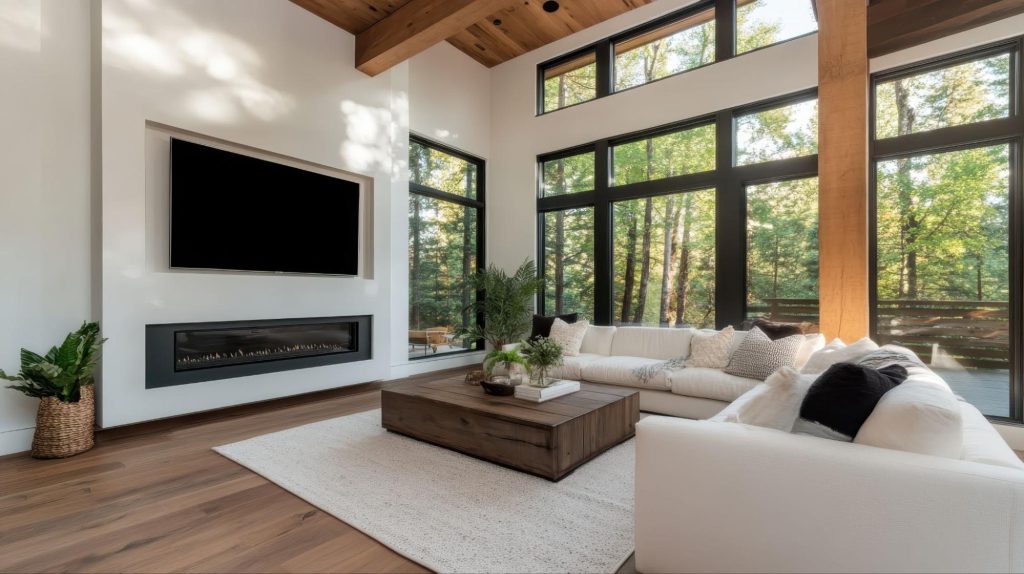
2. Bedroom
The bedroom is where we rest and recharge, and creating a sustainable and healthy environment can significantly improve sleep quality and overall well-being. Read on for some tips on how to crack this.
- Organic Latex Mattresses: Traditional mattresses are often made with synthetic materials, including chemical flame retardants, adhesives, and petroleum-based foams- all of which can diffuse harmful VOCs in the air. Organic latex mattresses are made from natural, biodegradable materials and are free from toxic chemicals. These mattresses also tend to have a longer lifespan and are more durable than conventional mattresses, meaning fewer resources are used over time.
- Blackout Curtains: Blackout curtains, typically made from heavy, natural fabrics, can block out external light, which is especially important for improving sleep quality. They also offer an energy-saving benefit in maintaining room temperature by keeping out heat in the summer and retaining warmth in the winter, reducing the need for heating or cooling systems.
- Furniture with Built-In Storage: Furniture with built-in storage, such as bed frames with drawers or multi-functional nightstands, reduces the need for additional furniture. This type of design optimizes space, which is particularly beneficial in smaller bedrooms, and encourages an organized and efficient environment.
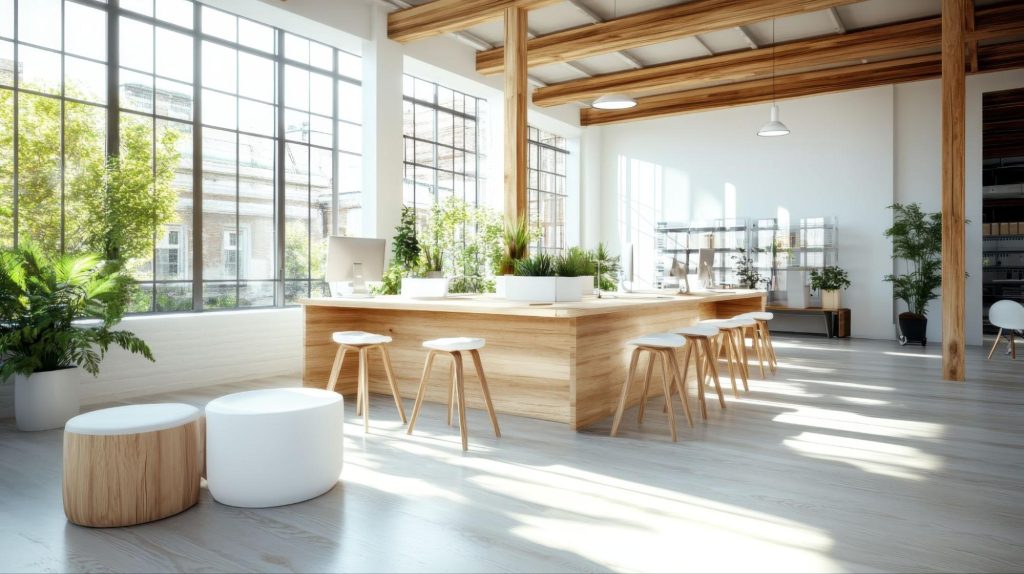
3. Kitchen
The kitchen is one of the most energy- and resource-intensive areas of the home, but with conscious choices, it can reduce consumption substantially. Here’s what you can do in this regard.
- Composting Bin: Managing organic waste through composting is a very simple way to reduce landfill contributions. Kitchen scraps like vegetable peels, coffee grounds, and other wet waste can be composted to create nutrient-rich soil for gardens or plants.
- Recycled Glass Countertops: Recycled glass countertops mix beauty with environmental responsibility. Made from reclaimed glass bottles, windows, and other recycled glass materials these countertops are durable. The glass is often combined with resin or concrete to get textures and colors that fit into modern and minimalist kitchens.
- Bamboo Cutting Boards: Bamboo is a highly renewable resource that makes an excellent alternative to traditional plastic or wooden cutting boards.
- Earthen Pots for Cooking: Earthen pots, or clay cookware, offer a natural and energy-efficient alternative to modern cookware. These pots are made from natural materials, which means they are biodegradable and have a minimal environmental impact.
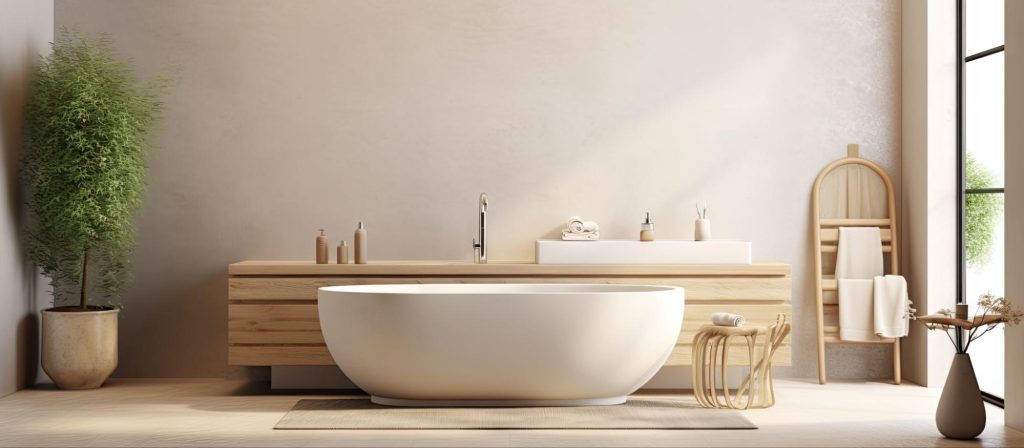
4. Bathroom
Bathrooms often use more water and energy per capita than any other room in the house. Designing sustainably in the bathroom can lead to significant resource savings over time. Some tips on implementing this are:
- Water-Efficient Fixtures: Installing water-saving devices like aerated showerheads, low-flow faucets, and dual-flush toilets can reduce water consumption without compromising needs. Aerated showerheads mix air with water, allowing for the same flow while using less water, while low-flow faucets ensure excess water is not wasted when washing hands or brushing teeth. Dual-flush toilets have the option to choose between a low-volume and a higher-volume flush, reducing water waste in the process. For proper installation and long-term efficiency, consulting a professional plombier laval can be helpful.
- Natural Stone or Recycled Glass Tiles: Natural stone tiles, such as slate, granite, or limestone, provide a luxurious aesthetic while maintaining eco-friendly qualities. These materials are abundant, durable, and require less processing compared to synthetic alternatives. Recycled glass tiles, on the other hand, as discussed, are made from post-consumer glass, such as bottles or windows, that would otherwise end up in landfills. Using either of these materials contributes greatly to sustainable design.
Practical Tips to Start Your Sustainable Design Journey
Starting on a sustainable design journey can feel overwhelming, but by making intentional choices, it’s possible to create eco-friendly spaces that are both functional and beautiful. Here’s how to get started:
1. Materials for Sustainable Design
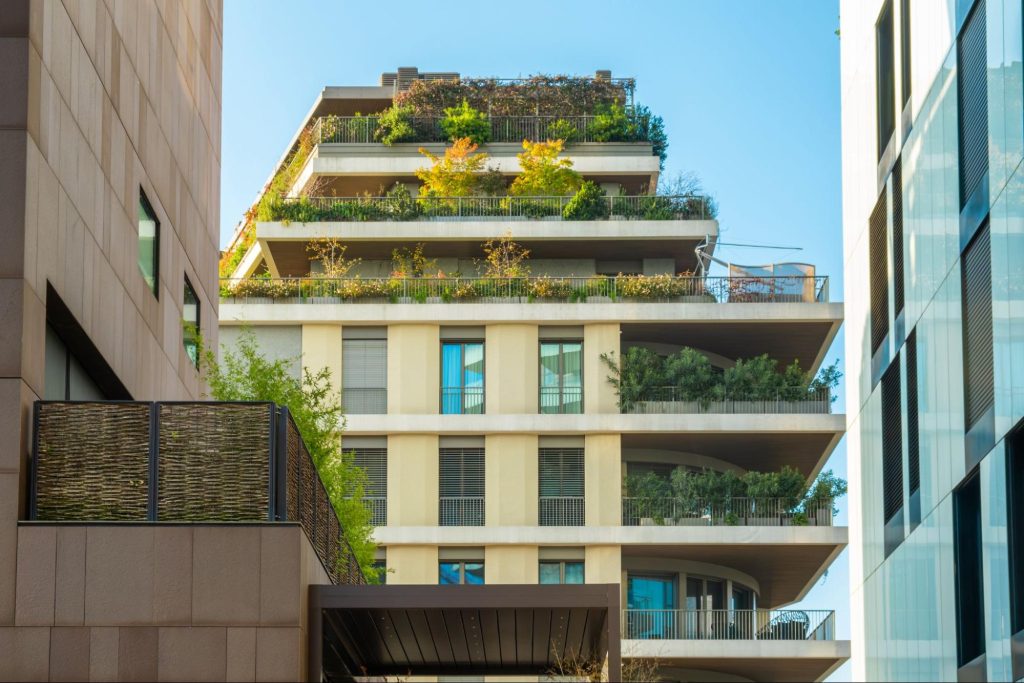
Renewable materials such as bamboo, cork, and hemp have gained popularity due to their eco-friendly use cases and fast growth cycles. These materials can be replenished quickly, making them excellent alternatives to traditional, non-renewable resources. Bamboo, for instance, is strong and versatile and also grows up to three feet per day, making it a highly renewable option for furniture, flooring, and other structural applications. Cork, harvested without harming the tree, provides a durable, sustainable option for flooring and wall coverings. It is also naturally resistant to fire, moisture, and pests. Hemp, also a fast-growing plant that requires minimal water, is commonly used for textiles, insulation, and sometimes biodegradable composites.
Recycled and reclaimed materials offer a way to repurpose existing resources which gives new life to discarded or unused materials while reducing waste. Reclaimed wood, for example, is salvaged from old buildings, barns, or even shipping pallets and can be transformed into furniture, flooring, and accent walls which can prevent deforestation and also minimize the energy required to produce new materials. Similarly, salvaged bricks, tiles, and stones can also be incorporated into interior and exterior designs. Another example is recycled glass, which can be used in the form of tiles made from discarded bottles
Biodegradable materials when they are no longer useful, break down naturally without causing harm to the environment. Natural wool, jute, and organic cotton are examples of biodegradable options. Wool, used in rugs and textiles, decomposes easily and can be produced without using harmful chemicals. Jute is commonly used in mats, rugs, and upholstery. It is durable, biodegradable, and requires little water to grow.
2. Non-Toxic Finishes
As discussed earlier, traditional paints and finishes contain volatile organic compounds (VOCs) that can release harmful chemicals into the air, leading to poor indoor air quality and potential health risks. Eco-friendly paints, such as those based on milk or clay can serve as non-toxic alternatives. Milk-based paints, made from natural ingredients like casein (a protein found in milk), lime, and pigments, are free of synthetic chemicals and VOCs, making them a healthier choice for both humans and the planet. Clay paints, similarly, are composed of natural minerals and pigments.
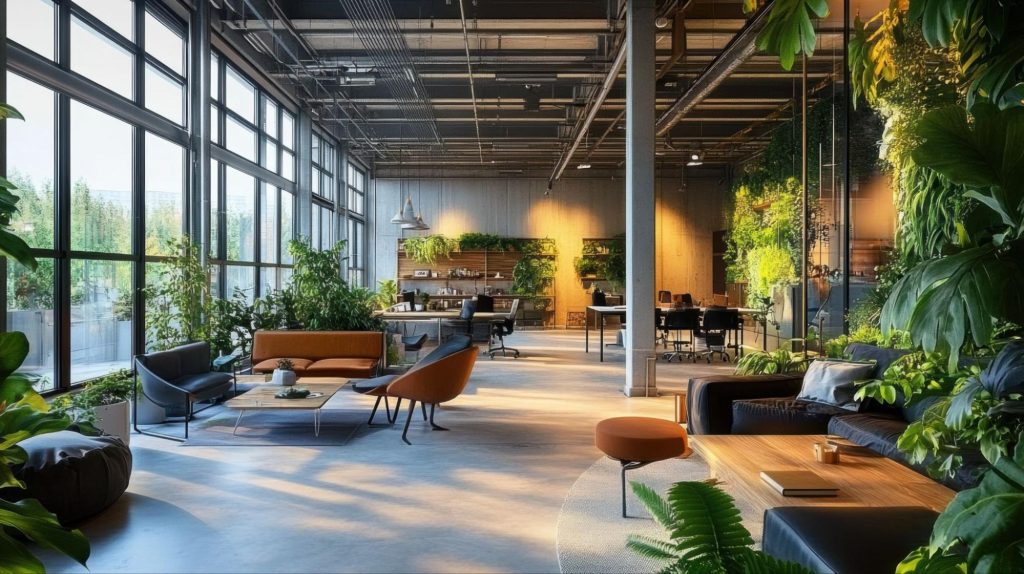
3. Biophilic Design and Its Role in Sustainability
Biophilic design literally translates to life-loving design and integrates natural elements into interiors to further emphasize the connection and harmony with nature. For example, a vertical garden in a dining area can act as a natural air filter while adding a point of interest.
Hydroponics is a soil-free method of growing plants using nutrient-rich water. In this system, plants grow in a controlled environment where their roots are submerged or misted with water containing the essential minerals. It is ideal for produce like thyme, basil, Padron peppers, or even strawberries. Its space-efficient vertical layout allows for plants to grow more in less space and uses up to 90% less water than traditional soil farming.
Curved furniture, pebble-shaped decor items, and materials like wood and stone signal natural patterns, creating calming and visually engaging interiors.
4. Technology for Sustainable Design
Technology is revolutionizing sustainable design, making it smarter, more efficient, and easier to implement. Consistent innovations in tech bring developments in how we design and maintain our interiors. Optimizing power usage through AI solutions by monitoring energy consumption in real-time, identifying wasteful patterns, and adjusting settings automatically can ensure efficiency. For instance, dimming the lights when natural sunlight is available or optimizing the HVAC system.
5. Investing in Quality Over Quantity
Quality over quantity is a golden rule for sustainable design. Instead of buying cheap, ‘fast’ furniture that wears out quickly, go for durable pieces made from sustainable materials. While these may cost more upfront, they are long-lasting and so, they reduce the need for frequent replacements and save resources in the long term.
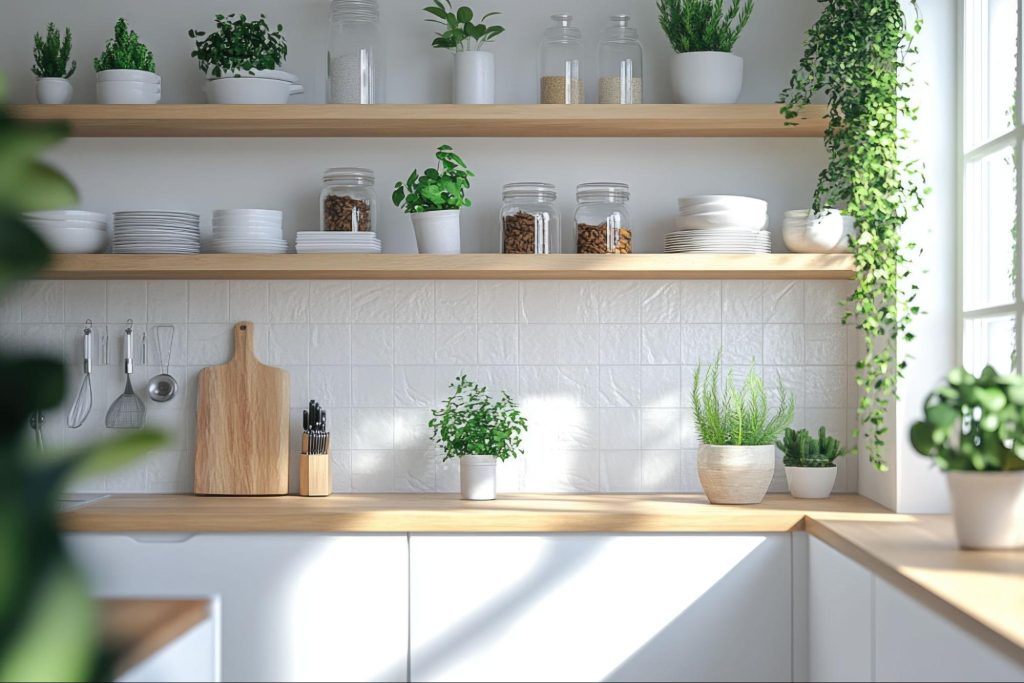
6. Creative DIY Upcycling Projects
Get creative with upcycling. Turn old furniture or materials into something new and beautiful. Sand down an old wooden table for a rustic look for sustainable office interior design or transform empty glass jars into chic storage containers. Take ideas and inspiration from Instagram or Pinterest. DIY projects reduce waste and give you a sense of accomplishment towards sustainability.
These small steps pave the way for bigger, more impactful sustainable design practices.
Final Thoughts
When we talk about sustainable interior design, people have different reactions and opinions depending on their contexts and subjective realities. Those opinions inform decisions that translate into behavior.
For example, a person might live in a city where, encouraged by a municipality or by educational institutions, environmental activism, and waste segregation are part of the local culture(context). They might, as a result, think themselves to be eco-conscious(opinion) and consider buying(behavior) metal straws for their kitchen which are marketed as plastic alternatives.
Similarly, a person living in a city where the public services infrastructure is inefficient and climate awareness is absent, may deplore the government for the situation and vote for the opposition if they showed seriousness for waste management and made sustainable public policies.
Since all of human behavior is a reaction to its context, it is impossible then, to separate humans from their social contexts and politics. This makes it difficult to understand the market, as in what group, society, or individual would understand the importance of sustainable interior design.
There is no one-size sustainable interior design formula that fits every consumer who wants a sustainable interior. Therefore, future designers and consultants should give precedence to the subjective reality, or the context, of the consumer. To sum up, services or recommendations that solve for design should benefit from adhering to practices and interventions rooted in the context of the user.
Lastly, sustainable interior design is a very dynamic and beautiful approach to creating spaces. By embracing thoughtful planning, one can design an interior that reflects values and contributes to a healthier planet. Let this guide serve as a roadmap to a greener future.
FAQs on Sustainable Interior Design
1. What are the four common features of sustainable design?
The four common features are energy efficiency, eco-friendly materials, waste reduction, and local sourcing. Energy-efficient systems and natural light reduce energy use. Eco-friendly materials like recycled or renewable products minimize environmental impact. Waste reduction involves using durable, reusable materials while sourcing materials and furniture locally, saving on transportation emissions.
2. What is sustainability in interior design?
Sustainability in interior design aims to reduce the impact on the environment by using eco-friendly materials, and energy-efficient systems, and promoting spaces that consider health and well-being. It focuses on creating designs that are long-lasting, and safe for both the environment and occupants.
3. How to become a sustainable interior designer?
To become a sustainable interior designer first, focus on education in eco-friendly materials, energy-efficient solutions, sustainable practices, and environmental sciences. Secondly, read up on all the academic literature available on sustainable development and interior design. Thirdly, with the knowledge gained, make a portfolio and build experience by working on green projects or integrating sustainable choices into your work. Finally, you have become an experienced sustainable designer.
4. What are some examples of sustainable design?
Examples of sustainable design include using reclaimed wood, energy-efficient (star-rated) lighting, green roofs, solar panels, and biophilic design with plants. Additionally, modular furniture and eco-friendly materials, such as reclaimed wood or low-VOC paints, are common in sustainable design.
5. How can I incorporate sustainable design into my home?
Start with energy-efficient appliances, LED lighting, and eco-friendly materials like bamboo or recycled furniture. Maximize natural light, add plants, and invest in durable furniture. Using non-toxic paints and low-flow water fixtures also contributes to a sustainable home.
If you’d like to discover more about Interior Design, consider the following resources
- Everything You Need To Know About Residential Interior Design (With Ideas)
- A Comprehensive Guide To Minimalist Interior Design And How To Make The Most Of It (With Ideas)
- A Comprehensive Guide to Modern Interior Design (With Ideas)
Next Steps
If you enjoyed this article and would like to learn more about interior design, head back to AND Academy’s blog for more articles like this one. We also recommend you check out this project by AND Learner, Pawanjot Singh to get inspiration for your next interior design project.
In case you need further assistance, here are some resources to consider:
- Watch this session by Snehanshu Mukherjee, Founding Partner at T.E.A.M and Mansi Almadi, an Interior Designer at Studio Lotus
- Talk to a course advisor to discuss how you can transform your career with one of our courses.
- Check out our Interior Design courses – all courses are taught through live, interactive classes by industry experts.
- Take advantage of our scholarship and funding options to overcome any financial hurdle on the path of your career transformation.
Note: All information and/or data from external sources is believed to be accurate as of the date of publication.


